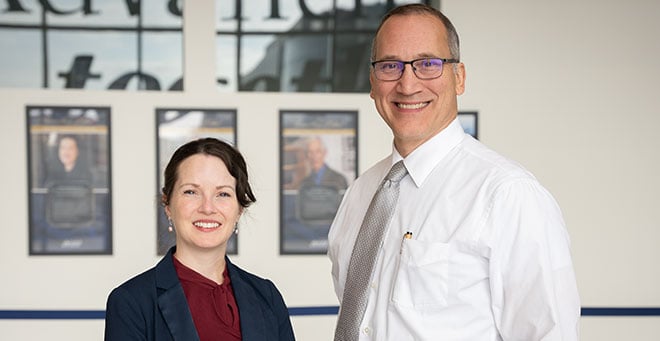
A new pilot study by UMass Chan Medical School and Worcester Polytechnic Institute researchers showed that technology-based interventions for emergency department patients at risk of suicide were rated highly by patients and may offer a promising way to fill the gap created by a shortage of behavioral health specialists for people in crisis.
The research paper, led by Celine Larkin, PhD, assistant professor of emergency medicine at UMass Chan, and Bengisu Tulu, PhD, associate professor at WPI, appears in JMIR Mental Health.
Follow-on studies will explore further the clinical efficacy of these technology-based interventions, with support from the nearly $17 million National Institute of Mental Health-funded Center for Accelerating Practices to End Suicide through Technology Translation (CAPES), a network of organizations including UMass Chan, UMass Memorial Health, UMass Lowell, UMass Amherst, Worcester Polytechnic Institute, Zero Suicide Institute and more than 100 other collaborating institutions. The first CAPES projects are expected to begin recruitment this winter, according to Dr. Larkin.
Previous large clinical trials such as the Emergency Department Safety Assessment and Follow-up Evaluation, or ED-SAFE, which was co-led by Edwin Boudreaux, PhD, professor of emergency medicine and co-author of the pilot study, showed that interventions such as providing resources to outpatient suicide-related care; intensive post-visit, telephone-based coaching; case management; and family systems therapeutic principles could reduce total suicide attempts by up to 30 percent.
But according to Larkin and Dr. Boudreaux, the sustainability and scalability of such interventions were limited in busy hospital emergency departments, especially those without a behavioral health clinician on staff.
“So, with this project, the goal was to find a way to make that emergency department safety planning and follow-up more scalable and sustainable using technology,” said Larkin.
Researchers in the current study honed a technology-facilitated version of an evidence-based intervention for suicidal emergency department patients called ReachCare. They tested the feasibility of the ReachCare intervention and compared the acceptability to patients and quality of ReachCare in the emergency department across three potential delivery modalities.
A total of 47 emergency department patients who screened positive for suicide risk were randomly assigned to receive one of the following ReachCare modalities: self-administered on the tablet app using a chatbot interface; delivered by an in-person clinician; or administered by a telehealth clinician. Clinicians used a web app to guide their intervention.
Patients gave high ratings for the acceptability and appropriateness of ReachCare’s components, and there were no substantial differences across the three modalities. The self-administered modality on the tablet app took significantly less time than the clinician modalities. The usability of the self-administered version was rated in the “very high” range. Safety plans created across all three modalities were high-quality, according to clinical reviewers.
Patients received follow-up counseling calls from a clinician at four, eight and 12 weeks after their emergency department visit, as well.
“The results suggest to us that maybe there’s promise in thinking about tablet-based safety planning for scalability in the future, so that more patients with suicide risk can receive an evidence-based intervention in the challenging emergency department setting,” said Larkin.
Larkin said the ReachCare research fits well with CAPES’ focus on suicide prevention, technology and implementation science.
To learn more about related projects at UMass Chan, listen to a podcast featuring Larkin and Boudreaux, who speak about the CAPES Center and their work to address the suicide epidemic in this country.

